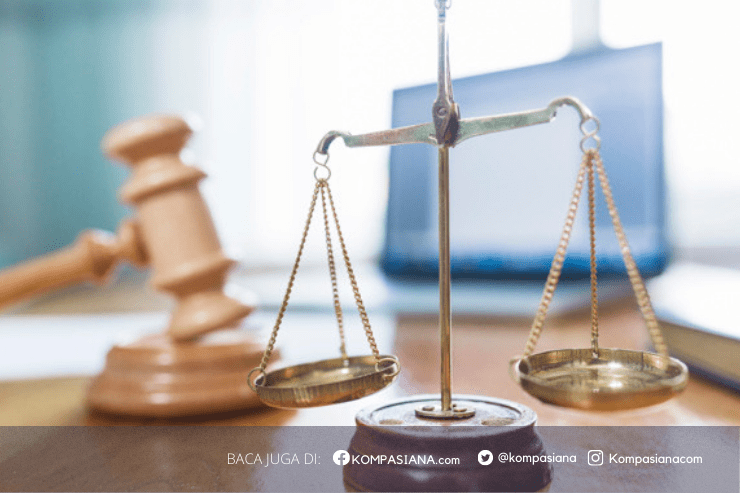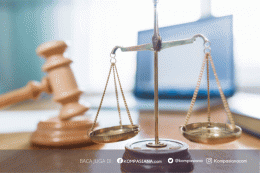The Dilemma of Jokowi's Alleged Diploma Photo Forgery: An Analysis
The controversy surrounding the authenticity of President Joko Widodo's diploma photo has sparked significant debate, particularly fueled by claims made by certain telematics experts. These claims often revolve around alleged inconsistencies or anomalies detected within the photograph itself, leading to accusations of forgery or manipulation (Chaniago et al., 2021). The core of the issue lies not only in the technical analysis of the image but also in the broader implications for public trust and the integrity of the electoral process (Bland, 2019). The accusations made by telematics experts usually involve scrutinizing the photo's digital properties, looking for telltale signs of alteration such as inconsistent lighting, mismatched resolutions, or unusual compression artifacts (Wirawan et al., 2023). Sophisticated image analysis techniques, including frequency domain analysis and edge detection, are often employed to highlight subtle discrepancies that might not be visible to the naked eye. It is crucial to approach such claims with a critical and discerning eye, recognizing that image analysis is not an exact science and that interpretations can be subjective, especially when dealing with low-resolution or poorly preserved source materials (Arifianto, 2019). Moreover, the potential for bias in the analysis process must be acknowledged, as pre-existing beliefs or political motivations can influence the way in which evidence is interpreted.
The challenge in determining the veracity of such claims lies in the inherent difficulty of definitively proving or disproving image manipulation, particularly when sophisticated techniques have been employed to conceal alterations (Kashyap et al., 2017). The advancement of image editing software has made it easier than ever to manipulate digital images in a way that is undetectable to the average observer (Aspira & Maheshkar, 2018). These tools enable forgers to seamlessly copy regions within an image, potentially obscuring the traces of tampering (Uliyan & Alshammari, 2020). When an object is spliced onto an image, a series of operations are often applied such as scaling, rotation, smoothing and contrast enhancement (Mohammed et al., 2018). Even with advanced forensic tools, distinguishing between genuine imperfections and deliberate alterations can be a daunting task (VidalMata et al., 2023). The field of image forensics is constantly evolving, with researchers developing new algorithms and techniques to detect even the most subtle forms of manipulation (VidalMata et al., 2023; Zheng et al., 2018). Furthermore, the reliance on expert testimony can be problematic, as different experts may offer conflicting opinions based on their own methodologies and interpretations. The role of the expert is to collect and analyze the available data in order to make a determination regarding the authenticity of the image.
The implications of this controversy extend beyond the realm of academic debate and touch upon fundamental principles of governance and accountability. Allegations of forged documents, especially those related to academic credentials, can erode public trust in leaders and institutions. Such accusations can undermine the legitimacy of elected officials and cast doubt on their qualifications to hold office. It is important to consider the potential motivations behind the spread of disinformation, including political agendas, personal grievances, or simply the desire to sow discord and chaos. The consequences of widespread distrust can be far-reaching, leading to political instability, social unrest, and a decline in civic engagement. The digital age has made it easier than ever to disseminate false or misleading information, and the rapid spread of such information through social media channels can have a significant impact on public opinion (Sharma et al., 2022).
The spread of misleading information is often done to circulate false information, gain political influence, and generate unethical publicity (Sharma et al., 2022).
Ultimately, the resolution of this controversy will depend on a combination of technical analysis, legal scrutiny, and public discourse. A transparent and impartial investigation, conducted by qualified experts with access to all relevant evidence, is essential to determine the truth of the matter. The investigation must consider not only the technical aspects of the image but also the context in which it was created and the chain of custody of the document. It's also important to be aware that even when people understand that media has been deceptively edited, the false impressions they got from it can stick around (Feng et al., 2023). The findings of the investigation should be made public, allowing citizens to draw their own conclusions based on the available evidence. Media literacy plays a crucial role in mitigating the effects of misinformation, as individuals who are equipped with the skills to critically evaluate media content are less likely to be misled (Johnson & Diakopoulos, 2021; Thomson et al., 2020). Education and awareness campaigns can help to promote media literacy and encourage citizens to be more discerning consumers of information (Hassoun et al., 2023; Karande et al., 2021).
The need to address the spread of misinformation is more critical than ever (Nyhan, 2020). The rise of social media has accelerated the creation and circulation of such information, posing a potential threat to societal institutions such as peace and democracy (Fard & Lingeswaran, 2020; Su et al., 2020). The anonymity afforded by online platforms allows malicious actors to spread false narratives without accountability, further exacerbating the problem (Luo et al., 2021; Shu, 2023). This can lead to confusion, fear, and even dangerous behavior among the public (Duzen et al., 2023). It is important to remember that the pursuit of truth is a collective responsibility, requiring the engagement of individuals, institutions, and the media. Objective facts are less influential in shaping public opinion than beliefs (Al-Knawy et al., 2023). It is important to promote a culture of critical thinking and evidence-based reasoning, where individuals are encouraged to question claims and seek out reliable sources of information (Adams et al., 2023; Ecker et al., 2024; Ylmaz & Ulusoy, 2023).
Some think the danger has been greatly exaggerated; that determining what is false is problematic because establishing the truth is difficult (Ecker et al., 2024). They also claim that countermeasures could violate democratic principles because people have a right to believe and express what they want (Ecker et al., 2024). It has been suggested that interventions be used to educate and empower people to make informed judgments free from manipulation (Ecker et al., 2024). To achieve this, citizens need to develop critical media literacy skills to participate effectively in a media-driven environment (Mateus, 2021). The aim is to increase one's capacity to fight misinformation, improve institutional oversight, and broaden the range of influencers in social media.
References
Adams, Z., Osman, M., Bechlivanidis, C., & Meder, B. (2023). (Why) Is Misinformation a Problem? Perspectives on Psychological Science, 18(6), 1436. https://doi.org/10.1177/17456916221141344
Al-Knawy, B., Kozlakidis, Z., Tarkoma, S., Bates, D. W., Honkela, A., Crooks, G., Rhee, K., & McKillop, M. M. (2023). Digital public health leadership in the global fight for health security. BMJ Global Health, 8(2). https://doi.org/10.1136/bmjgh-2022-011454







